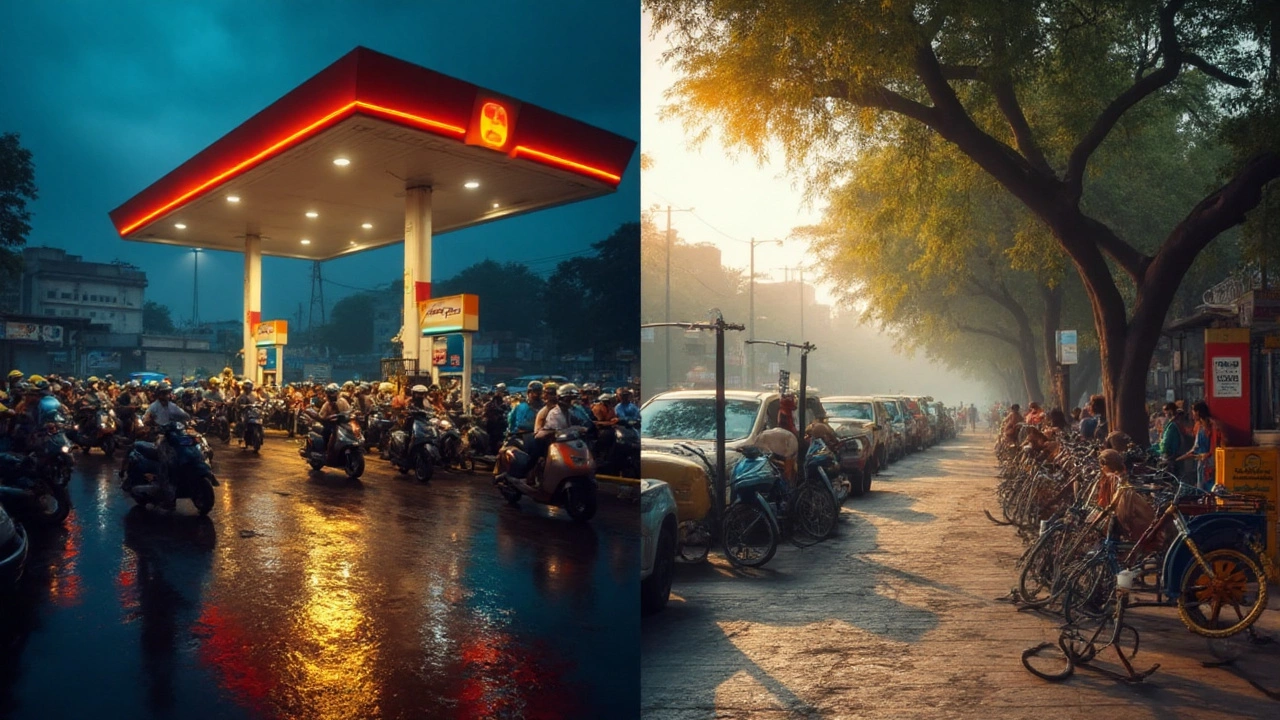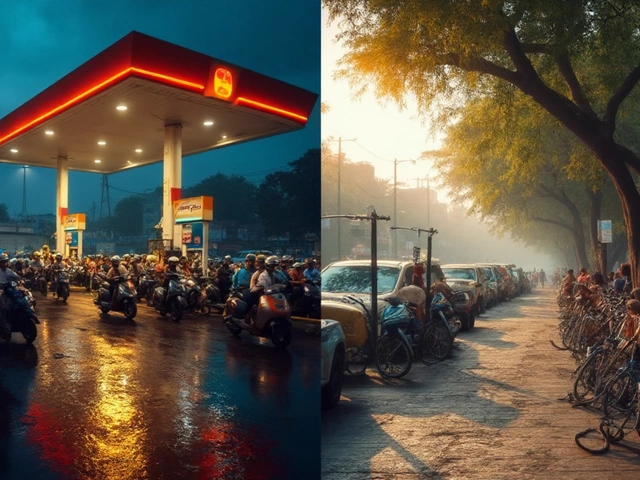Prices can spike today and customers barely flinch. Give it a year, and they switch brands, change habits, or buy different products. That gap is the whole story of short-run and long-run demand. To anchor the basics, here’s the central idea:
Demand is the relationship between a product’s price and the quantity that buyers are willing and able to purchase in a given period, holding other factors constant.
TL;DR
- Short-run demand shows how buyers react before they can fully adjust habits. It’s usually less elastic.
- Long-run demand lets buyers make bigger changes (switch products, move, replace durables), so it’s more elastic.
- Common pattern: |elasticity| short run ≈ 0.1-0.4; long run ≈ 0.5-1.0+ (varies by market).
- Pricing, promotions, and capacity bets should match the time horizon you’re targeting.
- Real example: petrol elasticity often around −0.2 short run and −0.6 to −0.8 long run (NBER, Energy Economics meta-analyses).
Definitions that actually help
We’re comparing two demand responses to the same change, just on different clocks.
Short-run demand is the quantity response to price when buyers face immediate constraints-fixed routines, contracts, limited information, or costly switching-so adjustments are partial.
Long-run demand is the quantity response after buyers have time to re-plan, search, switch, relocate, or replace durable goods, so adjustments are much larger.
Economists summarise that difference with elasticity.
Price elasticity of demand measures the percentage change in quantity demanded caused by a 1% change in price, holding other drivers constant.
One reliable rule: long-run demand is more elastic than short-run demand. Same people, same product, different time to adjust.
Why the long run bends more: the adjustment channels
People need time and options. In the short run, they may not have either. Over the long run, these channels open up:
- Substitution: New brands, generics, different pack sizes, or switching to a rival technology.
- Durable replacement: When a fridge, car, or heater reaches end-of-life, buyers can choose a different efficiency level or fuel.
- Habit and search costs: It takes time to break routines, research alternatives, and try new shops or apps.
- Contracts and frictions: Leases, mobile plans, or supplier contracts slow down switching.
- Innovation: Producers respond with alternatives the market didn’t have last year.
These channels don’t work overnight. That’s why the short-run response is muted, and the long-run response is larger.
What the evidence says (with real markets)
Let’s ground this in numbers you can use.
Gasoline (petrol) demand is a classic case with low short-run and higher long-run elasticity due to commuting constraints and vehicle replacement cycles. Meta-analyses by Espey (1998) and Labandeira, Labeaga, and López-Otero (2017, Energy Economics) and work summarised by NBER typically report short-run price elasticity near −0.1 to −0.3 and long-run around −0.5 to −0.9. Short run: drivers still need to commute. Long run: they buy fuel-efficient cars, move closer to work, or switch modes.
Electricity demand usually shows low short-run elasticity (appliances and routines are fixed) and higher long-run elasticity as users upgrade to efficient appliances and better insulation. Typical estimates cluster around −0.1 to −0.3 short run and −0.5 to −0.7 long run (International Energy Agency summaries and academic surveys).
Durable goods are products like cars, appliances, or machinery with multi-year lifespans where purchase timing and replacement cycles drive long-run sensitivity. Discounts today might not move the needle if buyers aren’t ready to replace. But accumulate price or operating-cost differences over years, and long-run demand responds strongly.
| Attribute | Short-Run Demand | Long-Run Demand |
|---|---|---|
| Time horizon | Days to a few months | Many months to years |
| Typical elasticity magnitude (|E|) | ~0.1-0.4 | ~0.5-1.0+ |
| Key adjustments | Usage tweaks, small brand switches | Durable replacement, relocation, technology switch |
| Contracts/frictions | Binding; limit switching | Expire; enable switching |
| Supply response interactions | Limited supplier re-optimisation | New products, entrants, and capacity reshape choices |
| Slope of observed demand curve | Steeper (less elastic) | Flatter (more elastic) |
| Forecast risk if misapplied | Overestimate impact of a price cut | Underestimate long-term drift away from product |
How to use this in pricing and planning
Knowing whether you’re dealing with short-run or long-run demand changes how you price, promote, and plan capacity.
- Short-run pricing: When demand is inelastic, small price rises can raise revenue if churn risk is low. Don’t get greedy-watch customer sentiment and regulator eyes.
- Promotion timing: For durables, align promos near replacement cycles. A 10% discount in the wrong month won’t move volume.
- Capacity bets: Don’t scale production on a short-run bump. Check if long-run demand will stick once buyers adjust.
- Segmentation: New customers may be more elastic than loyal customers. Long-run, even loyal segments can change habits.
- Expect lagged effects: The full lift from a price cut or feature launch may take quarters as awareness spreads.
One practical tip: say you run a subscription app and raise price by 8%. Week 1 churn is small. Month 3 to 6 churn is larger as users test alternatives. The long-run demand curve shows you the full picture-do your unit economics still work after that lag?
Short-run and long-run demand for inputs (the firm side)
Demand isn’t just consumers buying products. Firms demand inputs-labour, machines, software, energy. Here the short run means some inputs are fixed; in the long run all inputs are adjustable.
Labour demand is a firm’s quantity of labour hired at a given wage, given technology and output goals. In the short run, capital (equipment, floorspace) is fixed, so the firm tweaks shifts or overtime. Long run, it can adopt automation, change layout, or retrain people.
Example: a bakery sees flour prices rise 15%. Short run: it runs ovens a bit less, trims waste, nudges prices. Long run: it invests in energy-efficient ovens, negotiates suppliers, or changes recipes (substitution) to reduce flour intensity. Input demand becomes more elastic over time because the firm can redesign how it produces.
Capital is the stock of equipment and structures used to produce goods and services; it’s usually fixed in the short run and adjustable in the long run. That’s the core reason short-run input demand is sticky. Leasing cycles, installation lead times, and budgets make quick changes hard.
Elasticity: quick math you can trust
Elasticity is the workhorse here. Use this to sanity-check expectations:
- Formula: E = (%ΔQ) / (%ΔP). If price up 10% and quantity falls 2%, E = −0.2 (inelastic).
- Rule of thumb: long-run |E| is usually 2-3x the short-run |E| in fuel, electricity, and other necessity-heavy categories.
- Revenue test: If |E| < 1, a price increase raises revenue (in the short run). If |E| > 1, it lowers revenue.
- Combine with costs: Sometimes you raise price despite long-run elasticity because margins require it; plan for churn recovery and product upgrades.
Want to forecast better? Estimate separate short-run and long-run elasticities from your data using a lagged model (today’s quantity depends on today’s price and past prices). You’ll often find immediate impacts are modest, but cumulative impacts over 3-6 months are substantial.

Signals that tell you which run you’re in
- Contracts are binding, switching fees bite, and buyers lack info ⇒ You’re seeing short-run demand.
- Buyers can wait for sales, replace equipment, or move to substitutes ⇒ Long-run demand will dominate outcomes.
- Durable vs non-durable: Non-durables (coffee pods) respond faster; durables (cars) respond at replacement.
- Share of wallet: The bigger the spend share, the more buyers will re-optimise over time.
- Innovation velocity: Fast-moving categories (apps) show quicker long-run shifts as new options arrive.
Related concepts you’ll run into next
Long-run vs short-run demand sits inside a broader decision map.
Cross-price elasticity measures how your demand changes when a different product’s price changes (substitutes or complements). In the long run, cross-effects often strengthen as buyers discover alternatives.
Income elasticity measures how demand shifts when incomes change. Over longer periods, income growth can raise demand for premium tiers and shrink demand for low-end options.
Supply matters too. A more elastic long-run supply (new entrants, capacity) reshapes your competitive set, which feeds back into your demand curve. Think of it as a dance: buyers adjust, sellers respond, and the long-run market looks very different from the short-run snapshot.
Practical examples you can copy
- Petrol station: Raise prices modestly on Monday; short-run volume barely shifts. But keep prices higher for months, and you’ll see more drivers switch times, change routes, or use public transport-long-run demand bites.
- Energy retailer: Peak-period surcharges don’t do much the first week. Pair them with appliance rebates and usage insights; twelve months later, peak demand drops meaningfully.
- Streaming service: Annual price rise shows low immediate churn. Six months later, as trials of rivals turn into subscriptions, churn accumulates. Long-run elasticity was higher than you assumed.
- Appliance brand: A 12% discount in May flops if replacement cycles peak in November. Move the same discount to the replacement window, and volume jumps-even at the same average yearly price.
Execution checklist
- Estimate two elasticities: one for 0-4 weeks, one for 3-12 months.
- Tag events: promos, competitor moves, supply outages-don’t let them blur your estimates.
- Segment by tenure: new users and long-time users often have very different long-run elasticities.
- Watch cohorts over time, not just total volume. Long-run effects show up in cohorts.
- Plan price tests that run long enough to capture replacement cycles for durables.
One-sentence anchor to remember
The same price change yields two demand curves: a steep short-run one and a flatter long-run one; build your pricing, promotions, and capacity around the curve that matches your decision window. short run vs long run demand is not just a textbook phrase-it’s how your revenue moves over time.
At-a-glance definitions (microdata)
For structured data and clarity, here are primary entities defined once:
- Short-run demand: Quantity response before buyers can fully adjust habits, contracts, or assets.
- Long-run demand: Quantity response after buyers can switch products, replace durables, and re-optimise.
- Price elasticity of demand: Percent change in quantity per 1% change in price.
- Gasoline (petrol) demand: Transport fuel demand showing low short-run and higher long-run elasticity.
- Electricity demand: Power consumption with small immediate response and larger delayed response.
- Durable goods: Multi-year life products where replacement timing drives long-run sensitivity.
- Labour demand: Firm hiring choices at a given wage; elasticities rise as capital becomes adjustable.
Next steps and troubleshooting
- If your price tests “don’t work,” ask if you measured only the short-run. Extend the window and check cohorts.
- If long-run churn surprises you, trace the adjustment channels you ignored (new substitutes, expiring contracts, replacement cycles).
- If forecasts overshoot after a discount, you probably applied a long-run elasticity to a short-run promo. Refit with separate horizons.
- If input costs jump, map short-run trims first (waste, scheduling), then long-run redesign (technology, contracts).
Authoritative sources you can rely on for benchmark elasticities include NBER working papers, the International Energy Agency’s demand studies, the Energy Journal, and peer-reviewed meta-analyses in Energy Economics. Two evergreen references: Espey (1998) on gasoline demand and Labandeira, Labeaga, and López-Otero (2017) on energy price elasticities.

Frequently Asked Questions
What is the difference between short-run demand and long-run demand?
Short-run demand shows how quantity reacts before buyers can fully adjust habits, contracts, or assets. Long-run demand shows the response after buyers have time to switch products, replace durable goods, move, or gather information. The same price change typically has a smaller effect in the short run and a larger effect in the long run because more adjustment channels open up.
Why is long-run demand more elastic than short-run demand?
Over time, buyers find substitutes, exit contracts, research alternatives, and replace durable goods. Producers also innovate and add capacity, improving choice. These changes make the long-run demand curve flatter (more elastic). In the short run, routines and frictions keep behaviour in place, so quantity barely moves compared to price.
What are typical values for short-run and long-run price elasticity?
It varies by market, but a common pattern is short run around −0.1 to −0.4, and long run around −0.5 to −1.0 or more. For petrol, meta-analyses often find about −0.2 in the short run and between −0.6 and −0.8 in the long run. For electricity, short-run elasticities are usually around −0.1 to −0.3, rising to −0.5 to −0.7 in the long run.
How do I estimate short-run vs long-run demand in my data?
Split your horizon. Run a model that includes both current price and lagged price effects (e.g., distributed lag or error-correction style) so immediate and cumulative responses are separated. Tag key events (promos, competitor moves) and track cohorts over months. Then report two elasticities: a near-term (0-4 weeks) and a long-run (3-12 months) figure.
Does this apply to B2B as well as consumer markets?
Yes. In B2B, short-run demand is pinned by contracts, SLAs, and installed bases. Long run, procurement cycles, re-tenders, and technology migrations open up. That’s why enterprise price rises can stick for a quarter but unravel at annual renewal if value gaps appear.
How do cross-price and income effects change across time horizons?
Cross-price effects usually strengthen over time as substitutes are discovered and adopted, especially when switching requires new skills or assets. Income effects can also grow as budgets are reallocated and buyers move to different quality tiers. Short-run responses are dampened by routines and incomplete information.
Is a price increase always good when demand is inelastic?
Not always. Short-run inelasticity can make revenue rise after a price increase, but long-run elasticity may be larger, and reputational or regulatory risks can offset gains. Also consider competition: higher prices can invite entry, making long-run demand more elastic than you expected.
What role do durable goods play in long-run demand?
Durables create timing. In the short run, people rarely replace a working car or appliance. Over years, when replacement occurs, buyers choose different efficiency levels, capacities, or fuels. Those choices magnify the long-run response to price and operating costs.

